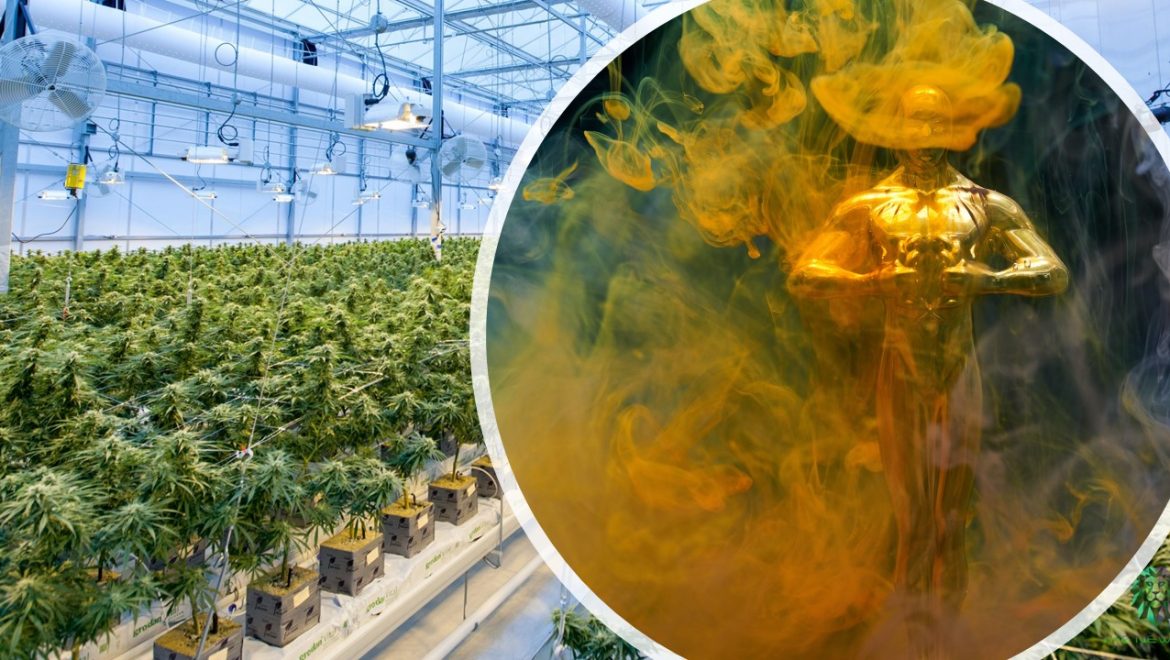
This post will teach you how to win a cannabis business license in any state, regardless of the license type. Competition for cannabis licenses is often fierce, and license limitations and complexities of the application process can be daunting enough to deter even extremely savvy business owners, making the chances of winning a cannabis license frustratingly low – unless you’re an MSO. With this guide, we have simplified the entire process into ten easy to understand steps to win a cannabis business license, and provide thorough details and instructions that are often tightly held secrets among consultants and attorneys.
DISCLAIMER: This article details the process of developing and applying for a cannabis business license – it does not discuss how to start or run a business. This publication assumes the applicant comes to the table with a business plan, funding, and team in place.
Step 1: Read the Statutes
Statutes tend to be the highest and/or first level of law, from which regulations are often developed. Statutes typically define the duties of the State in carrying out cannabis legalization and licensing efforts. However, these laws are often nothing more than a general guideline, whereas the Regulations developed from said Statues tend to be much more descriptive, thorough, and complex.
Tips for Statutes Reading:
a. Read ALL of the Statutes, including Definitions. For instance, applicants often have questions where the answer is not apparent in the body of the Statutes, however, the Definitions sometimes describe terms in a way that clarify items of uncertainty.
b. Don’t skim: at least one person on your team should carefully read every passage in the Statutes.
c. Sometimes statutes are forgotten or ignored when Regulations are created, so it’s important to cross-reference any sections or passages that are confusing or seem to be omitted from the Regulations.
d. Make a searchable Statutes document: often states don’t publish Statutes in a way that is easy to track and understand. The best solution for this problem is to copy and paste all of the Statutes into a running Word document. Then, you can use Control+F to search the compiled Word document for any term you are seeking information about – this is particularly useful when crafting license application narratives: see more in Step 7 below.
e. Make a critical list: for any passages that are extremely relevant to your cannabis license application, make a list of these critical items, ideally in a spreadsheet. For instance, Statutes that refer to odor mitigation is critical for cultivators, while Statutes that refer to dealing with the public are especially important for dispensaries.
Step 2: Read the Regulations
Regulations detail the bulk of the rules related to applying for a cannabis business license. However, it should be noted that a significant amount of time can elapse between the creation of Statutes, and the subsequent development and publishing of Regulations. Cannabis license applicants should plan accordingly.
When Regulations are released, these should be painstakingly read in their entirety, ideally multiple times by every executive on your team. Your Chief Compliance Officer and your attorney should become intensively familiar with these laws. The process for reviewing Regulations is similar to that for Statutes, as detailed below.
Tips for Regulations Reading:
a. Read ALL of the Regulations in their entirety
b. Cross reference Regulations with Statutes
c. Make a searchable Regulations Word document
d. Make a list of passages that are critical to your license type
e. Make a list of passages that don’t make sense, passages that conflict with other sections of the Regulations or Statutes, and missing citations. This list can be used to query the State or the State’s cannabis regulatory body for clarification. For this purpose, consider hiring a lobbyist with access to the regulatory body.
Step 3: Read the RFA/Notice of Acceptance
When a state is finally ready to start accepting cannabis business license applications, a Request for Applications (“RFA”), Final Notice, or other document is released that provides details on what the state wants submitted as part of the cannabis license application process. Unlike Statutes and Regulations, which discuss the process of laws, an RFA or Final Notice primarily discusses precisely how a cannabis business will submit an application, and how they will carry out some of the processes of their license type, as well as the general requirements of individuals named in the application, and of the application entity.
The steps for reviewing an RFA or Final Notice are similar to those for Regulations and Statutes.
Tips for RFA reading:
a. Read ALL of the RFA/Final Notice in its entirety
b. Cross reference with Regulations and Statutes
c. Make a searchable RFA/Final Notice Word document
d. Make a list of RFA passages that are critical to your license type
e. Make a list of RFA passages that don’t make sense, passages that conflict with other sections of the Regulations or Statutes, and missing citations. Address these issues with the state cannabis regulatory body.
Step 4: Read the Ordinances
Ordinances dictate requirements for cannabis business license applicants at a local or municipal level. Sometimes, municipalities will require a separate cannabis license application for the town or city in question, while in other cases the state level application is sufficient. Ordinances will generally differ from Statutes, Regulations, and the RFA in that they describe what one must do locally to win a cannabis business license. These local requirements often center around zoning issues, distance setback requirements, parking lot and access controls, security, waste disposal, and other local issues. The process for reviewing Ordinances is similar to the process for reviewing Statutes, Regulations, and the RFA.
Tips for Ordinances reading:
a. Read ALL of the Ordinances in their entirety
b. Cross reference with Regulations, Statutes, and the RFA/Final Notice
c. Make a searchable Ordinances Word document
d. Make a list of Ordinance passages that are critical to your license type
e. Make a list of Ordinance passages that don’t make sense, passages that conflict with other sections of the Regulations, Statutes, or RFA, and missing citations. Address these issues with the municipality directly.
Step 5: Prepare a List of Required Documents and Information
Use the RFA/Final Notice and Ordinances to generate a list of documents needed for the cannabis license application. These documents can include formation and tax documents, insurance documents, business and personal records, certifications and licenses, manuals, plans, SOPs, waivers, affidavits, disclaimers, resumes, background checks and criminal history reports, floor plans, architectural designs, security overlays, minority and diversity statuses, resumes, personal identification, and other types of documents required for the application process.
Ensure that your entire team is comfortable providing all of the required information, including items that can be extremely personally invasive, such as background checks, fingerprints, taxes, personal history disclosure forms, and other sensitive details. Reluctance or refusal to provide these details can delay a cannabis license application significantly, or disqualify it in some cases.
Step 6: Write the Plans, Narratives, and/or SOPs
The heavy work of winning a cannabis license is in the writing of narratives and plans required by the state regulatory body. After you have generated a list per Step #5 above, assign these plans and documents to your executive team, attorneys, consultants, managers, employees, vendors or contractors, and other relevant individuals and organizations.
When writing plans for a cannabis license application, speak to the state regulatory body in their own language, using appropriate citations whenever possible. Remember that the hierarchy of citations is Statutes, Regulations, RFA/Final Notice, and finally, Ordinances. The following is the general concept for this type of writing, using a Waste Disposal Plan as an example (which is required by nearly every state cannabis licensing authority):
A. Review all requirements in the Statutes, Regulations, Final Notice, and Ordinances related to waste disposal. This is where the Word documents you created in previous steps will be useful – you can use Control+f to search each document for instances of “waste disposal” and similar terms, to be sure you locate and understand precisely what the state wants in regard to this issue.
B. After reviewing all of the information available related to waste disposal, craft a narrative that tells the state regulatory body that you not only understand all of the requirements, but also impart details on exactly how your cannabis business will carry out the steps necessary to ensure compliance with the state’s waste disposal requirements. For instance, “We will install cameras in restricted areas where cannabis and cannabis products are slated to be destroyed, and we will record and store all activities related to the destruction and disposal of cannabis products.” INSERT CITATION HERE. <<<This citation will be the Statute, Regulation, or other legal citation that lists the exact section and subsection where the state’s requirement regarding recording of waste disposal activities can be found.
C. Because state documents are often written in chronological or other order, you can craft narratives and plans to address each of the state’s requirements in the same order. However, always use original writing: do not copy-paste or closely mirror what the state or other authority has written. For instance, Regulations regarding waste disposal may be written in the following order:
a. Identifying cannabis and cannabis products to be disposed of
b. Quarantining and sequestration of cannabis products slated for disposal
c. Destruction of the cannabis products
d. Recording of the waste disposal process and related record-keeping
In fact, it’s often easiest to use the state’s requirements as an outline for your plan.
Tips for writing narratives, SOPs, plans, and other documents:
1. Write in active voice
2. Use persuasive narrative style
3. Include relevant citations whenever possible
4. Use Times New Roman at 11- or 12-point font
5. Write factually
6. Refer to chemovars and phytochemical content
7. Write directly to the state prompt
Step 7: License Materials Editing
All of the documents created for the cannabis license application must be edited. Editing processes are often collaborative, and in general no writer should ever be permitted to edit their own work as the final editor. Therefore, if, for instance, your company’s CCO writes the required Regulatory Compliance Plan, another executive, attorney, or consultant should edit the plan. Multi-level editing is preferred, but at the minimum, each document will have one writer and one editor. Editing should occur on 3 basic levels:
1. Editing for grammar, spelling, content, voice, syntax, etc.
2. Editing for accuracy of information provided
3. Editing for citations – ensuring that the citation listed is from the appropriate section of the regulatory body document
Step 8: Cannabis Application Materials Compilation and Redactions
All of the documents described above must be compiled in the manner prescribed by the state or regulatory body. This is generally described in the RFA or Final Notice. In some cases, paper copies must be bound in a certain order and mailed or delivered by hand, while other states have asked for the delivery of materials on thumb or zip drives. Recently, state website portals have opened to allow submission of application materials electronically, which significantly simplifies the compilation and submission process.
Often, information contained in the narratives, plans, and other documents submitted as part of the cannabis business license application are required by law to be redacted. Redactions are generally related to privacy laws, which is often a local issue where counsel familiar with the state or municipal requirements for redactions should be employed.
Step 9: Submission of Application
After completing all of the above steps, the application must be submitted in the prescribed manner in the timeline offered – pay careful attention to this. For instance, if you submit your cannabis license application early – before the opening date for acceptance – some states will automatically disqualify your application. However, while submitting before a hard deadline is of key concern, submitting in the timeline provided by the state isn’t always so concise: some states have rolling applications with no deadline, some have a single day where applications are due, and some have short windows of time – often a month or less – where applications are accepted.
While submitting by any required deadline or timeline is critical, ensuring that all application materials are complete is just as important. If you rush to the deadline or submission date and miss a document, or submit an application that is even slightly incomplete, it will most likely be rejected.
PRO tip:
If the state application submission process asks for information or documents that don’t apply to your cannabis business, don’t do nothing. Instead, write and submit a document that describes why the request doesn’t apply.
Step 10: Correction and Rejections for Cure
Even if you follow the previous nine steps to the letter, there is still a small chance that the state regulatory body could reject your application. In many cases this could be a temporary rejection where what’s called a ‘cure’ is required. This cure could be something as simple as a forgotten or lost minor document, or something as complex as additional financial source details. Whatever the cure request is, you must take action immediately and provide the required information, and then resubmit the application as quickly as possible.
Conclusion
State cannabis regulatory bodies often make the process to obtain a cannabis license arduous, expensive, and complicated – even in states with social equity cannabis licenses. However, if you follow these 10 steps to win a cannabis license, your chances will significantly improve. And with the right help and the right team behind your application, you can win: even multiple licenses, in multiple states and countries.
Next step? Determine whether you need a Conditional or Standard Cannabis License
Russ Hudson is an international cannabis consultant specializing in licensing and compliance. He is also the author of The Big Book of Terps – the world’s largest scientific textbook on terpenes, flavonoids, and synergy in cannabis. Russ has dedicated more than 30 years to cannabis, working with the private social clubs of Spain, the coffeeshops and suppliers of the Netherlands, and cannabis, hemp, and CBD producers in Germany, Switzerland, Portugal, and other EU countries, while also specializing as a cannabis licensing, compliance, and regulatory affairs expert in more than a dozen US states. Russ has been arrested and jailed for cultivation and trafficking, he has been the subject of a Vice documentary, he has written a children’s book about cannabis, and he currently researches and collaborates with the world’s leading cannabinoid, terpene, and flavonoid scientists.





1 Comment
Write a comment